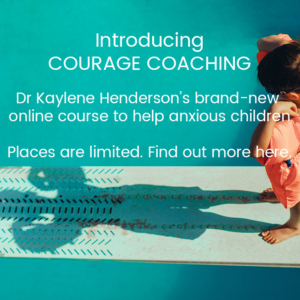How To Help Your Screaming Child
How to Help Your Screaming Child – A Parent’s Guide to Emotional Regulation
Most of us have witnessed a screaming child who has felt completely out of control. Some of us have seen this in our own kids, while others have spectated from the side-lines as an unknown child has had a ‘meltdown’ in the grocery store. (Worse still of course is when it IS our screaming child melting down in the grocery store). It’s like watching an internal tornado gain intensity and wreak havoc within our child leaving her hysterical. Sometimes there’s a build up, at other times the emotional storm seems to blow in without warning, rendering our child suddenly unresponsive to logic or reasoning. I describe it like this, not just because this is how it appears, but because it’s useful to imagine what it would feel like to be affected by a mini-tornado-for-one – completely terrifying! And just as we would never expect a child caught up in a powerful tornado to be able to ‘calm themselves down’, a child with overwhelming emotions finds it distressingly impossible too.
The reason for this is that the ability to calm down from strong emotional states (clinically known as ‘emotional regulation’) requires the development of specific brain pathways which take years to establish.
We know that when children learn to talk, they first utter sounds before full words and later sentences. Similarly, the capacity for emotional regulation develops in stages too:
- Initially the parent needs to calm their infant’s distress by doing things like holding her close, patting, rocking etc.
- Later feelings can be managed with the help of the parent (co-regulation of emotions)
- Finally the child can manage her feelings on her own (self-regulation of emotions)
In reality, even as adults we might move between stages 2 and 3 depending on how well we’re coping at the time, how much sleep we’ve had and how stressful the trigger seems. This means that most of the time we can calm ourselves down but at other times we will still need the help of close adults to help comfort and contain our distress.
So what can we do when our child has a meltdown?
Of course, in an ideal world we predict and prevent meltdowns before they happen. Once your child’s feelings overwhelm her however, these are the steps which can best help your child:
- Keep calm. Remind yourself that your screaming child is out of control and needs your help to deal with more than her brain is wired to handle.
- Stay with your child. Sometimes parents send their young child to ‘time-out’ with the instruction to calm themselves down. Not only is this a neurologically impossible task but this rejection often makes the child feel more upset so her distress lasts longer. Your child needs lots of help ‘co-regulating’ her emotions before she can learn to manage her feelings on her own. This is called ‘time-in’ rather than ‘time-out’.
- Save talking until later. Your child cannot concentrate on your words while she remains upset so keep talking to a minimum. Simply say in a calm, reassuring tone, “You’re really upset. I’ll help you calm down. Lets slow our breathing down, cuddle in, you’ll feel better soon”.
- Breathe with your child. Show her how to take slow deep breaths. If she tries to shout or scream about her plight, simply reassure her that you’ll listen to what she has to say but first you’re going to help her calm down.
- Debrief. Once your child is calm it’s useful to have a quick chat about what just happened. You can start the conversation by saying something like, “Gee, you must have felt really angry then. You did well calming down but I wonder what we could have done instead so that you didn’t have to feel so upset”.
Listen to your child but be firm with your limits: “I understand that you felt angry because your sister grabbed the toy you were playing with, but what might be a better way to get your toy back next time?”
Children need to learn how to manage tricky situations but they only learn well once they’re feeling calm.
When we stay with our children and help to co-regulate their strong emotions we teach them that feelings, however big, are manageable. Perhaps more importantly, we teach our children that they can rely on us to support them when they feel like they’re losing their grip.
Even in the grocery store.
*For simplicity, children are referred to using feminine pronouns (‘she’/‘her’) in this article, although the information equally applies to boys.
Dr Kaylene Henderson is passionate about sharing practical, research based advice to help you feel more calm and confident while raising kind, resilient and socially and emotionally healthy children.
And here for the corresponding course series for early childhood professionals, Raising Good Kids: Managing Behaviour and Emotions in Early Childhood Care and Education Settings.




